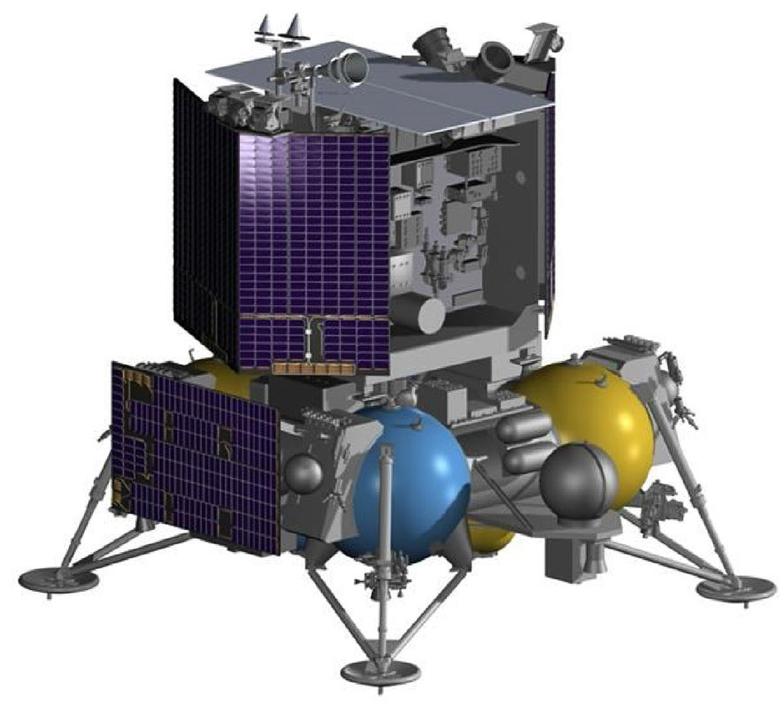Science
Through the missions Luna-Glob starting 2022 and Luna-Resurs starting 2025, the main scientific goals of the LASser ablation MAss-spectrometer (LASMA-LR) is to provide general characteristic of the composition of the regolith in situ at the landing sites, in particular:
- the direct investigation of elemental and isotopic composition of the collected soil samples
- the derivation of the chemical composition to infer the mineralogical composition
- to identify and quantify the volatile bearing minerals (e.g. apatites) in the soil samples
- to identify and quantify the cold-trapped volatiles such as H2O, CO2, hydrocarbons to name a few, in the soil samples.
To achieve these scientific goals the LASMA-LR will be supplied with up to 12 soil samples from the vicinity of the spacecraft landing place with the help of a robotic arm. These soil samples will be accommodated on a sample carousel with 12 separate sample containers.
The Luna-Resurs mission will even be equipped with a drilling device allowing to access samples down to ~1 m below the surface (Heather and Sefton-Nash, 2020; Donaldson Hanna et al., 2017). So, a depth-by-depth analysis of the regolith is possible, which will allow a more detailed reconstruction of the landing site geological history.

The scientific data that will be obtained by LASMA-LR in the course of the Luna-Glob and Luna Resurs missions can be essential for a wide range of studies:
- This includes the geological characteristics of the spacecraft landing sites, the classification of lunar rocks and minerals, the analysis of the lunar dust composition, the search for rare earth elements, native metals and alloys, determination of the content of chemically bound water in regolith, and others.
- It will contribute to the understanding of the geological history of the landing sites rocks and to the space weathering factors (meteorite bombardment, solar wind intensity) that affected the surface through geological time.
Achievement of these tasks will contribute to the study of fundamental questions ranging from the formation and evolution history of the Moon to the advancement of a number of applied problems of the Moon exploration and colonization.
